Elm trees are some of the most versatile and resilient trees found across North America, Asia, and Europe. Known for their impressive canopies, these deciduous trees are an ideal choice for landscaping due to their ability to thrive in various growing conditions. They are also celebrated for their attractive foliage, offering year-round shade and beauty. Elm trees differ by species, and their leaves, bark, and seeds help identify them.
In this guide, we’ll explore 20 popular types of elm trees, providing details on their leaf identification and growth habits.
Different Types of Elm Trees
Cedar Elm (Ulmus crassifolia)
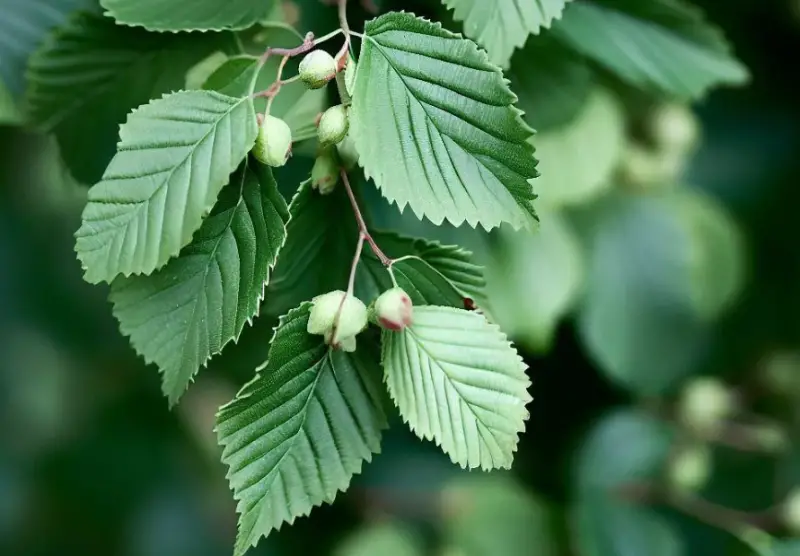
Cedar elm is a versatile tree well-suited to urban environments, thriving in conditions such as drought, low-quality soil, and pollution. Its small, serrated leaves and gray, scaly bark give it a unique appearance, contributing to its ornamental value. Naturally found near junipers, this tree’s common name reflects its habitat.
While cedar elm is relatively resilient, it remains somewhat vulnerable to Dutch elm disease. This species can reach heights of up to 82 feet and is adaptable to USDA zones 6-9, making it a popular choice for landscaping in various settings.
Camperdown Elm (Ulmus glabra Camperdownii)
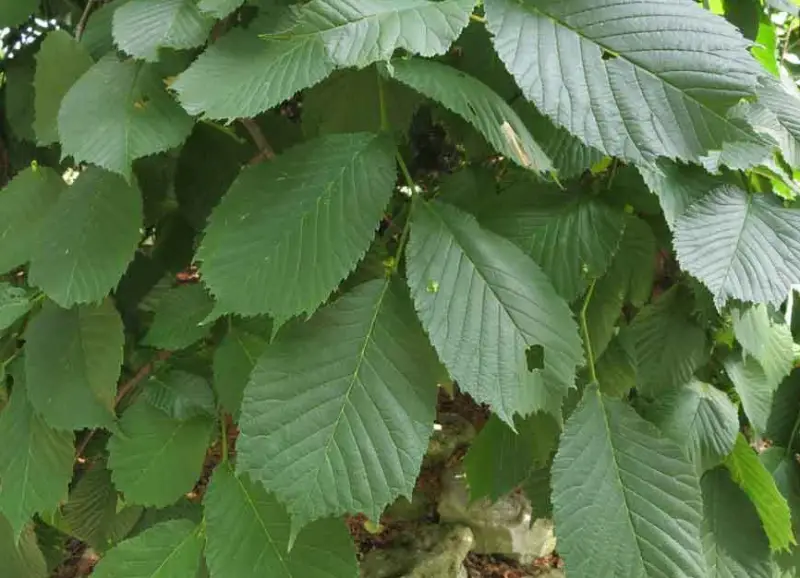
Camperdown elm is a weeping variety of wych elm, renowned for its twisted, trailing branches and dense foliage that create a striking visual impact in gardens. The tree features broad, double-toothed leaves and smooth gray bark, enhancing its ornamental appeal. Preferring moist, well-draining soil, Camperdown elm thrives with regular watering during dry periods.
This unique species typically reaches heights of 15 to 25 feet and is well-suited for USDA zones 5-7, making it a popular choice for adding character to landscapes.
American Elm (Ulmus americana)
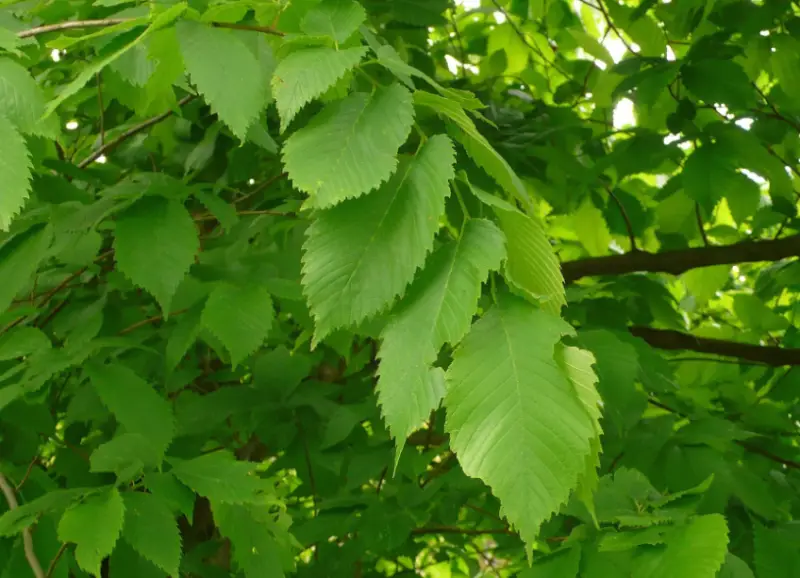
American elm, commonly referred to as water elm, is a large deciduous tree characterized by its umbrella-like canopy, which provides ample shade in landscapes. The tree’s grayish-brown bark displays deep diamond-shaped fissures, while its ovate leaves feature serrated edges.
Highly sought after for parks and streets, the American elm showcases a stunning presence despite its vulnerability to Dutch elm disease. This tree typically reaches heights of up to 72 feet and thrives in USDA zones 2-9, making it a versatile choice for various settings.
Florida Elm (Ulmus americana var. floridana)

The Florida elm is a fast-growing variety of the American elm, distinguished by its vase-shaped growth pattern that enhances its elegant appearance in landscapes. Its ovate leaves feature serrated edges, and the grayish-brown bark is marked by vertical fissures.
Thriving in the warm climate of the southern U.S., this tree reaches impressive heights of up to 72 feet, making it a popular choice for a variety of settings. It grows well in USDA zones 2-8.
Bosque Elm (Ulmus parvifolia ‘Bosque’)
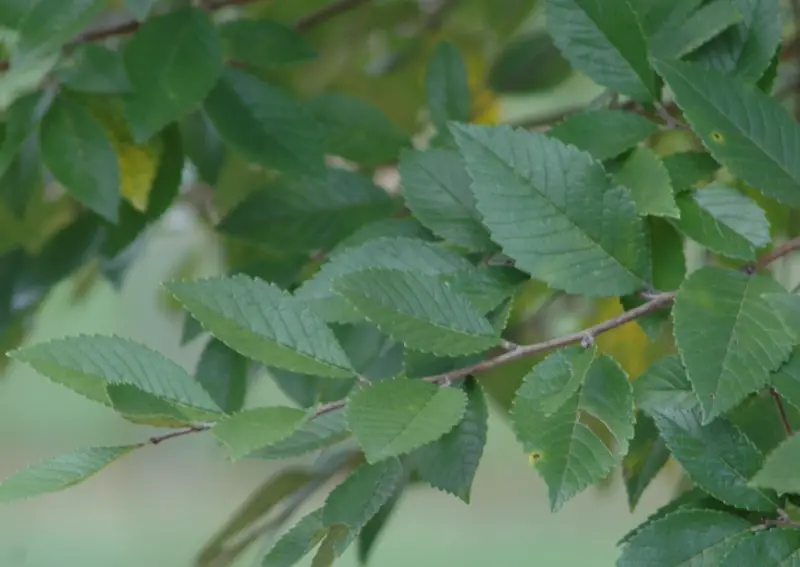
The Bosque elm, a cultivar of the Chinese elm, features a tall, narrow shape with slightly drooping branches that add character to its appearance. Its visually striking peeling bark reveals shades of orange, while the golden-red leaves in fall enhance its ornamental value.
This compact tree is particularly well-suited for parks and residential streets, making it an attractive choice for urban landscapes. Reaching heights of up to 20 feet, the Bosque elm thrives in USDA zones 2-9.
Slippery Elm (Ulmus rubra)
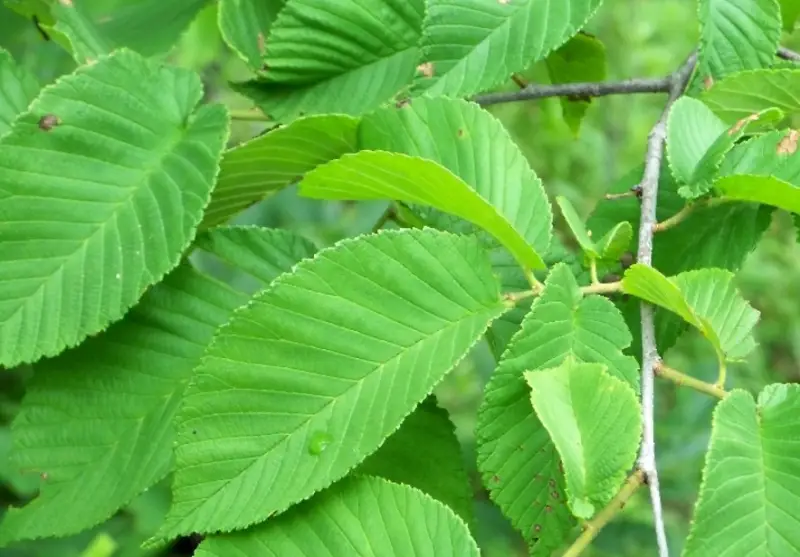
Slippery elm, also known as red elm, is a medium-sized deciduous tree native to the central and southern United States. This tree features a vase-shaped crown and is recognized for the sticky substance found in its inner bark, which contributes to its name. The leaves are long, with a rough texture on the top and a smoother underside. Its bark is reddish-gray, characterized by shallow furrows and scales, which assist in identification.
In autumn, the leaves transform into a vibrant yellow, enhancing the beauty of fall landscapes. This attractive tree, however, is vulnerable to Dutch elm disease and typically reaches heights of 30 to 60 feet.
Siberian Elm (Ulmus pumila)
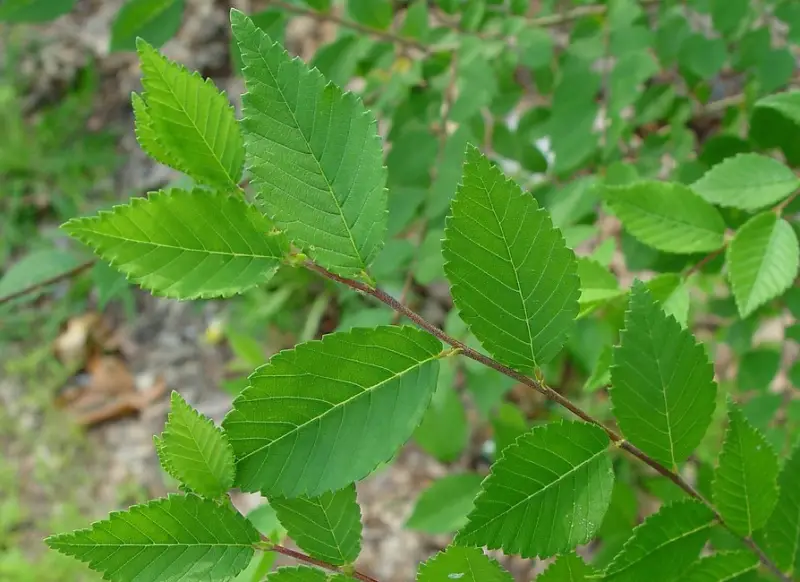
Siberian elm, native to Siberia, Korea, and northern China, is a fast-growing deciduous tree that ranges from small to medium in size. Its dark green, glossy leaves feature serrated edges, while the gray bark exhibits prominent vertical fissures, aiding in identification. Renowned for its adaptability, Siberian elm thrives in various conditions, including drought and poor soil.
This hardy tree shows strong resistance to Dutch elm disease, though it is not completely immune. It can reach impressive heights, typically growing between 50 to 70 feet tall, making it a popular choice in challenging environments.
European White Elm (Ulmus laevis)
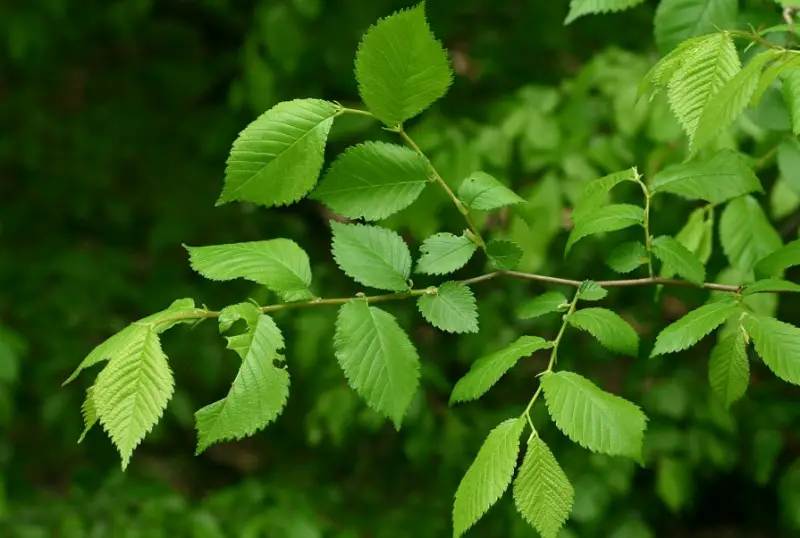
European white elm, also known as Russian elm, is a large deciduous tree native to central and southeastern Europe. Thriving in swampy environments and floodplains, it is particularly well-suited for areas prone to wet conditions. This tree is characterized by its oval leaves with serrated edges and a broad, open crown that develops as it matures. Its bark displays a whitish-gray color with reddish-brown tints, adding to its distinctive appearance.
Its loose branching makes it less suitable for landscaping near buildings, while it excels in natural settings like riverbanks, with the potential to grow over 100 feet tall.
English Elm (Ulmus procera)
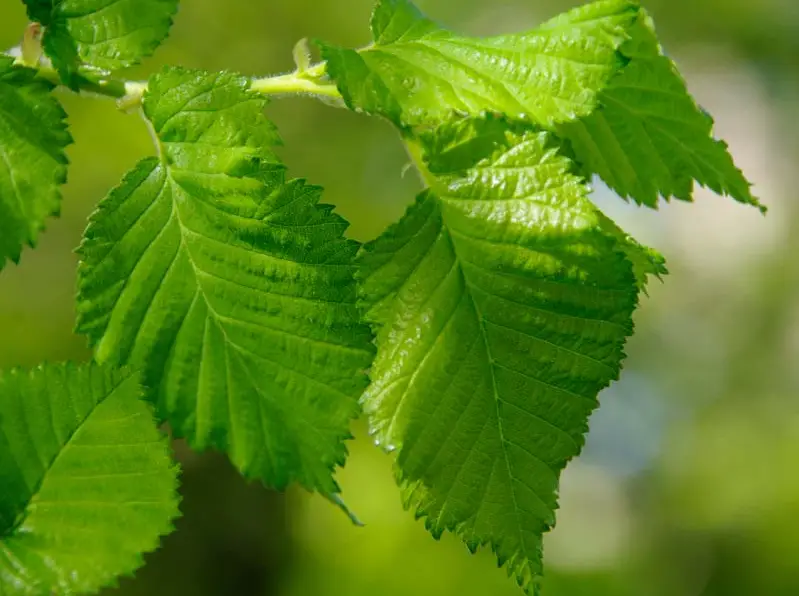
English elm is a tall deciduous tree native to Western Europe, distinguished by its ability to reproduce through suckers instead of seeds. It features a broad, expansive canopy and dark green, serrated leaves, while its rough, grayish-brown bark adds to its distinctive appearance. This species faces significant challenges due to its high susceptibility to Dutch elm disease, which has led to a marked decline in its population and reduced its desirability for landscaping.
However, its majestic height and wide canopy contribute to its historical prominence in European landscapes, with the potential to grow over 130 feet tall.
David Elm (Ulmus davidiana)
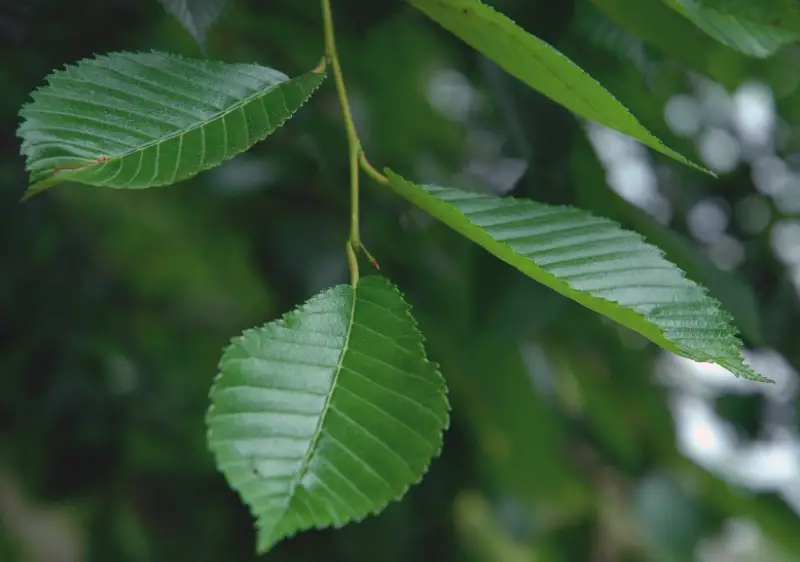
David elm (Ulmus davidiana), native to China, Siberia, and Korea, ranks among the smallest elm species, typically reaching heights of 30 to 50 feet. It is recognized for its obovate, rough-textured leaves that develop striking red pigments as they mature. This tree plays a crucial role in breeding programs aimed at developing cultivars resistant to Dutch elm disease, highlighting its significance in conservation efforts.
Thriving in wet, moist environments, the David elm can be challenging to cultivate outside its native regions, which affects its adaptability compared to other elm species. Its dense canopy offers an attractive option for specific landscape needs in suitable climates, growing best in USDA zones 4-8.
Chinese Elm (Ulmus parvifolia)
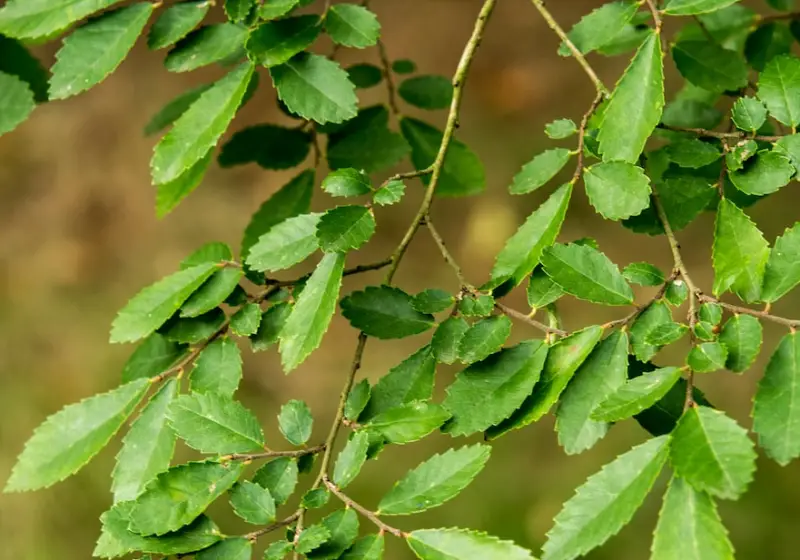
Chinese elm (Ulmus parvifolia), also known as lacebark elm, is an ornamental tree admired for its rounded shape and striking exfoliating bark. The bark peels to reveal vibrant shades of brown, gray, green, and orange, giving it a distinctive look throughout the year. Its high tolerance to drought and greater resistance to Dutch elm disease make it an ideal choice for urban landscapes.
This hardy species thrives in a variety of conditions, adding both visual appeal and practical value to parks, streets, and gardens in USDA zones 5-9, with a maximum height of 33-60 feet.
Cherry-Bark Elm (Ulmus villosa)
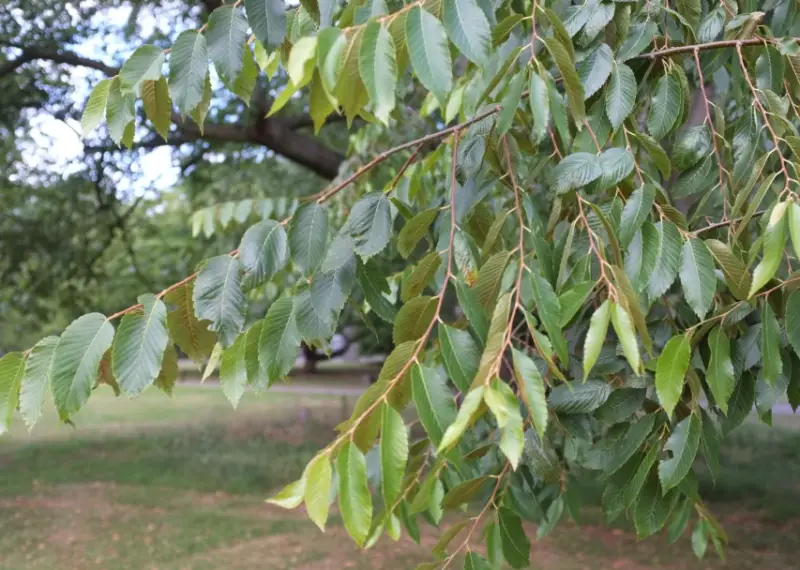
Cherry-bark elm is a large, bushy tree characterized by its smooth branches concealed by thick trunks. The tree features bright green, jagged leaves that are elliptic in shape, providing a vibrant look to its overall appearance. The smooth, flaky bark encasing the trunk adds to its aesthetic appeal, making it a favorite for landscaping.
Known for its resistance to Dutch elm disease, cherry-bark elm is often planted in parks and along streets, contributing to urban greenery. This species can reach impressive heights of up to 82 feet and thrives in USDA zones 4-8.
Japanese Elm (Zelkova serrata)
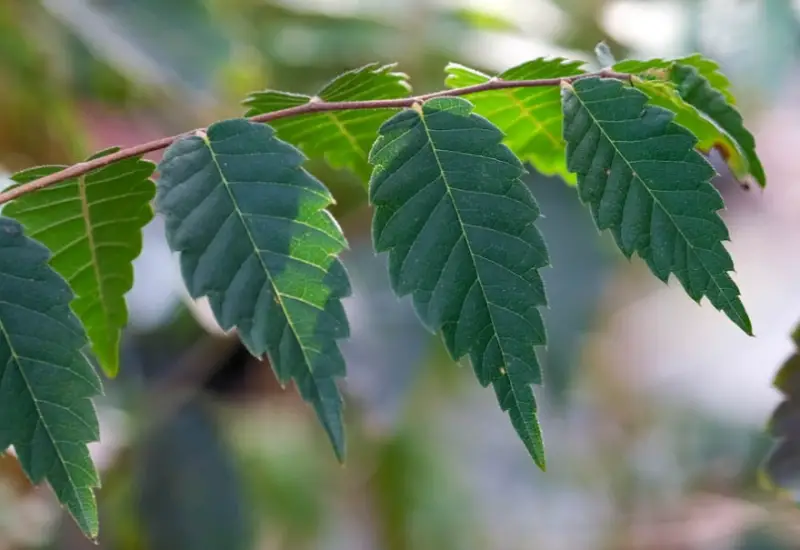
The Japanese elm, native to Japan, features a broad canopy and a short trunk that branches out into numerous limbs, making it an exceptional shade tree. Its grayish-white, flaky bark adds to its aesthetic appeal, while its oblong, toothed leaves enhance its distinctive look.
This tree is resistant to Dutch elm disease, which contributes to its popularity in urban landscapes. With a maximum height of 55 feet, the Japanese elm thrives in USDA zones 4-8.
Wych Elm (Ulmus glabra)
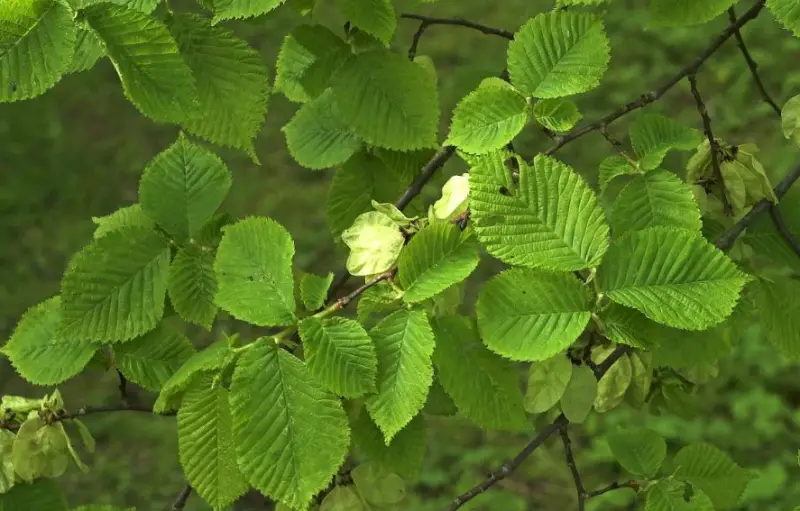
Wych elm, commonly referred to as Scotch elm, features an umbrella-like canopy and demonstrates remarkable tolerance to cold climates, making it well-suited for northern Europe. The tree showcases smooth gray bark in its youth, which develops fissures as it matures.
Its long, broad leaves and robust resistance to harsh weather conditions make it an excellent choice for northern landscapes. With a maximum height of 130 feet, the wych elm thrives in USDA zones 2-8.
Golden Wych Elm (Ulmus glabra ‘Lutescens’)
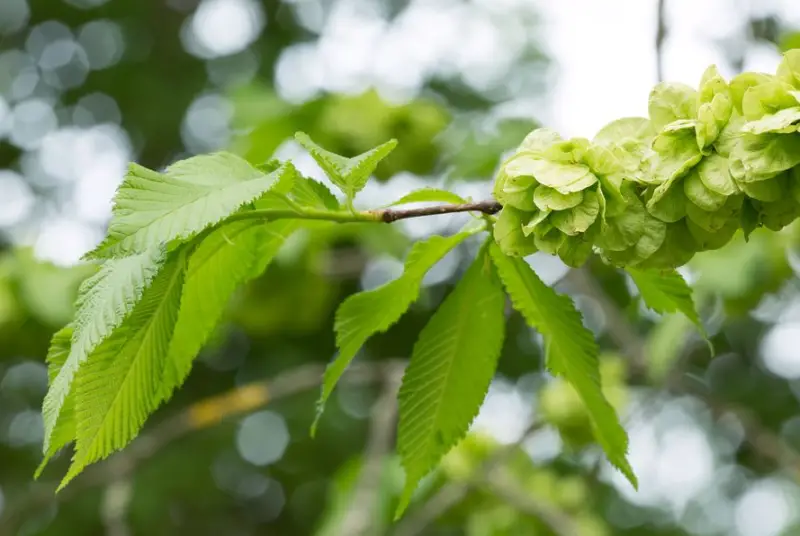
The Golden Wych Elm, a smaller cultivar of the Wych elm, is a medium-sized deciduous tree recognized for its vibrant yellow leaves and smooth gray bark. Its striking appearance and moderate size make it an excellent choice for ornamental landscaping in gardens and parks.
This tree can reach a maximum height of 50 feet and thrives in USDA zones 3-9, providing a cheerful splash of color throughout the growing season.
Field Elm (Ulmus minor)
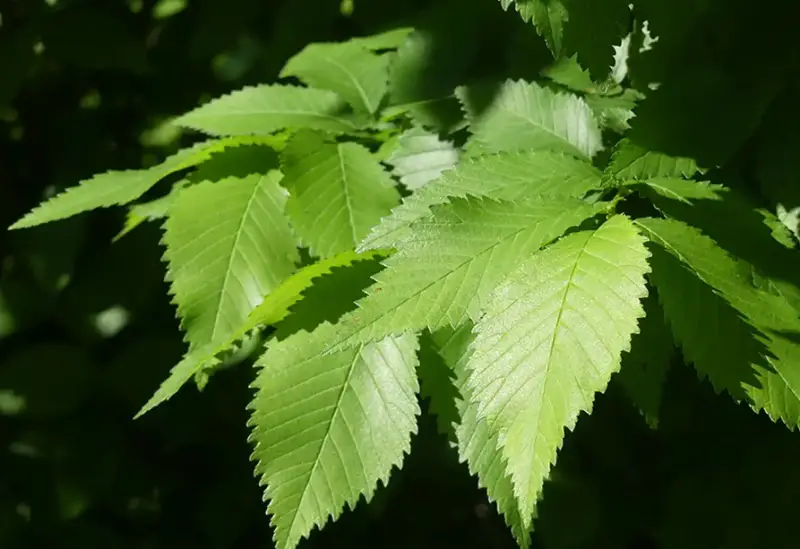
Field elm is a tall tree native to Europe, characterized by its small, glossy green leaves and rough, gray bark. This species can reach impressive heights of up to 100 feet, showcasing a graceful stature that makes it an ideal choice for large open spaces.
Its adaptability to various environments adds to its appeal, allowing it to thrive in USDA zones 4-8.
English Elm Atinia (Ulmus minor ‘Atinia’)
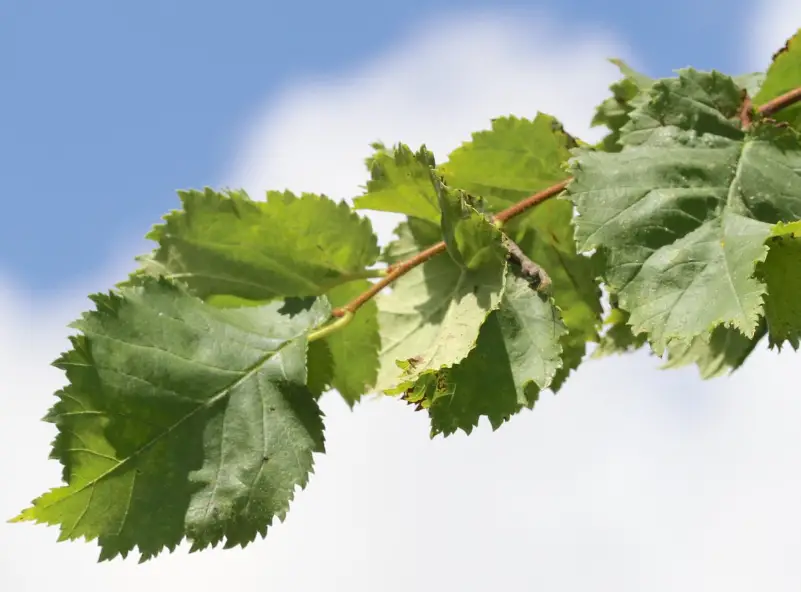
English elm Atinia is a fast-growing deciduous tree recognized for its distinctive figure-eight-shaped leaves. With its rough gray bark and impressive height, this species stands out in expansive landscapes, often reaching over 130 feet tall. Native to Europe, the English elm Atinia thrives in moderate climates, making it suitable for various environments.
Its robust structure and attractive foliage contribute to its appeal as a prominent feature in parks and large gardens, providing both shade and visual interest in the landscape. This tree flourishes in USDA zones 5-8.
Dutch Elm (Ulmus x hollandica)
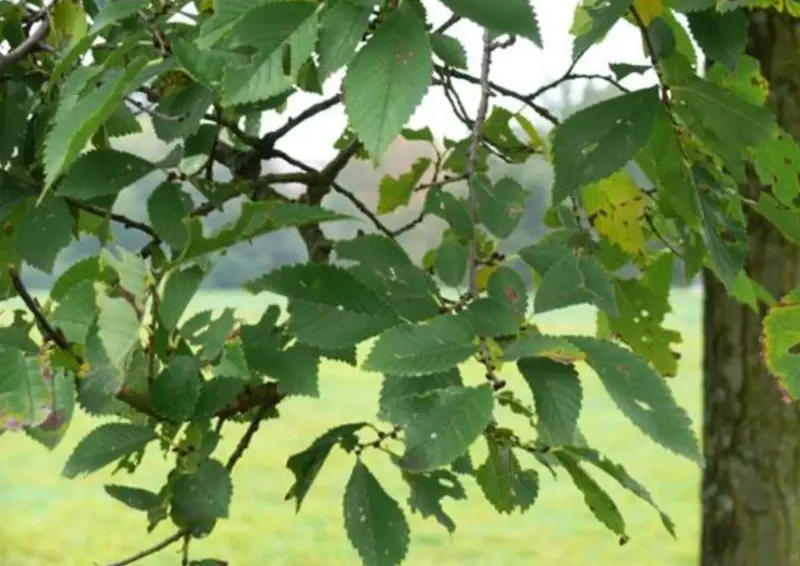
Dutch elm is a hybrid tree, resulting from the cross between wych and field elms, distinguished by its massive canopy and conical-shaped foliage. The tree features light green leaves and gray bark that develops shallow fissures over time, enhancing its ornamental appeal.
Known for its fast growth and resilience, the Dutch elm has become a favored choice for urban and suburban landscapes. It can reach impressive heights of up to 130 feet, providing ample shade and aesthetic value. This hybrid thrives in USDA zones 4-9.






